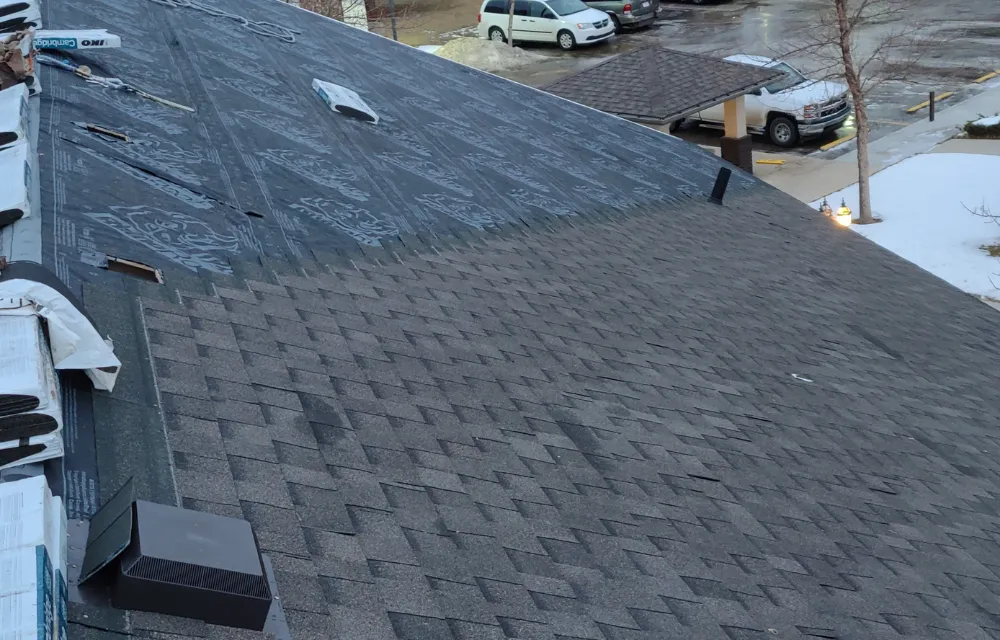When it comes to replacing your roof, timing can make all the difference. While roofing can technically be done year-round, there’s a sweet spot when it comes to shingle adhesion—and that’s spring and summer! The combination of warm temperatures and adequate sunlight creates the perfect conditions for new shingles to seal properly and protect your home for years to come.
How Shingles Stick: The Science of Sealing
Modern asphalt shingles are designed with a self-sealing adhesive strip. This strip is heat-activated, meaning it needs warmth from the sun to bond effectively. When the temperature is consistently warm—ideally above 10°C (50°F)—the adhesive softens, allowing the shingles to stick together and form a watertight seal. Once bonded, this seal helps prevent wind uplift, water infiltration, and other weather-related damage.
Spring and Summer: The Ideal Conditions for Shingles
Here’s why spring and summer provide the best conditions for new shingles:
- Consistent Warmth – Spring and summer offer stable, warm temperatures that help activate the shingle sealant efficiently. Cold weather can slow down the process or even prevent proper adhesion, leading to potential weak spots in your roofing system.
- Longer Daylight Hours – More sunlight means more exposure to heat, ensuring the shingles have ample time to bond throughout the day. In contrast, fall and winter months have shorter days and less direct sunlight, which can delay the sealing process.
- Lower Risk of Debris Interference – In spring and summer, there’s generally less risk of fallen leaves, ice, or snow interfering with the bonding process. This ensures a cleaner, more secure seal between shingles.
- Reduced Likelihood of Storm Damage – While summer storms can be intense, the overall risk of high winds and extreme temperature fluctuations is lower compared to winter, when shingles are more brittle and prone to cracking.
What Happens If Shingles Don’t Seal Properly?
If shingles don’t stick down as intended, they can be vulnerable to:
- Wind uplift – Strong gusts can loosen improperly sealed shingles, potentially leading to roof damage.
- Water infiltration – Gaps between unsealed shingles create entry points for water, increasing the risk of leaks and interior damage.
- Premature aging – When shingles don’t bond correctly, they may shift or warp over time, reducing the lifespan of your roof.
Can Roofing Be Done in Fall or Winter?
Yes, but extra precautions are needed. Roofing professionals may use manual sealing methods, such as applying roofing cement under each tab, to compensate for the lack of natural heat. However, this adds time and labor costs to the project. If you have the flexibility to schedule your roof replacement, spring and summer remain the best options.
Plan Ahead for the Best Roofing Results
If you’re thinking about a new roof, consider booking your installation during the spring or summer months. Not only will your shingles adhere better, but you’ll also enjoy peace of mind knowing your home is well-protected before the harsher seasons arrive.
At High Low Roofing, we’re here to help you make the best decision for your home. Contact us today to schedule a consultation and ensure your roof is ready to weather the elements!



